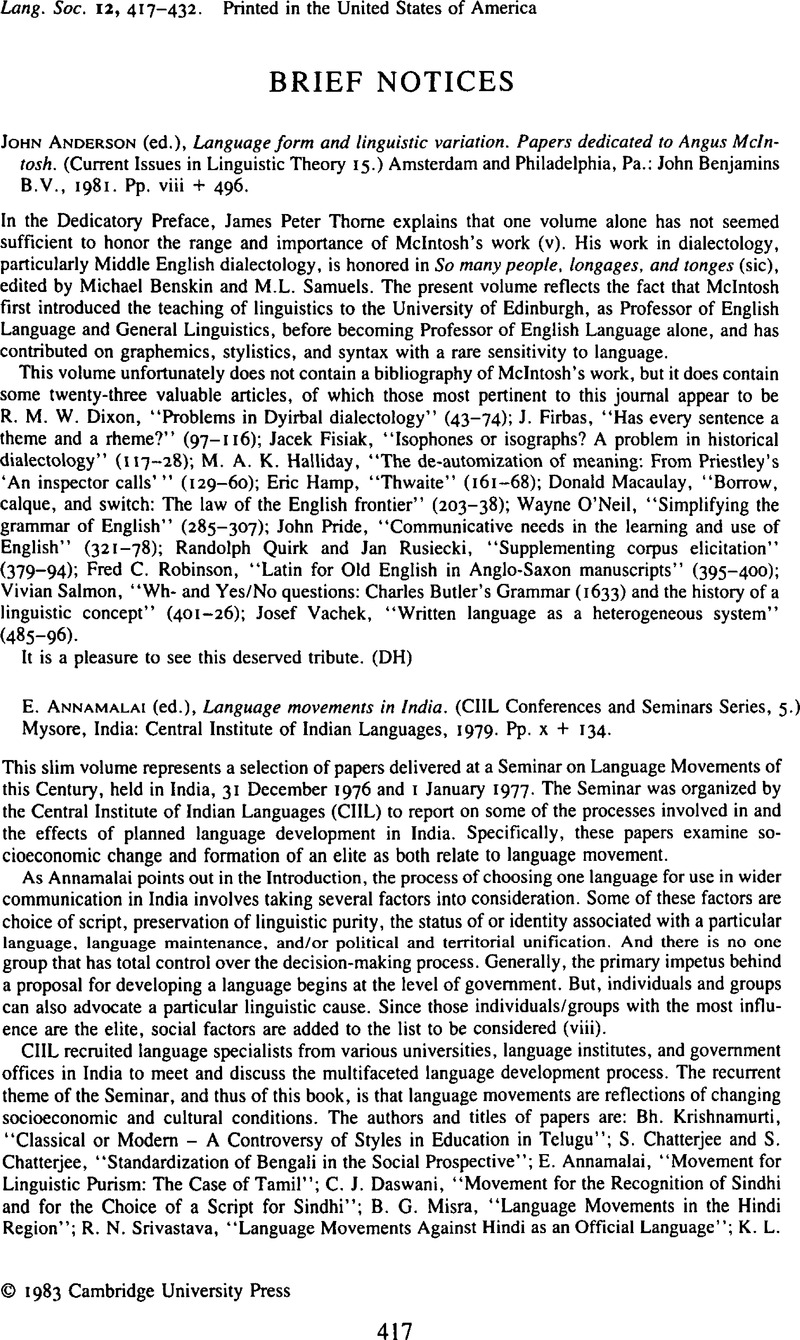No CrossRef data available.
Article contents
Brief Notices/Publications Received
Published online by Cambridge University Press: 18 December 2008
Abstract

- Type
- Brief notices/publications received
- Information
- Copyright
- Copyright © Cambridge University Press 1983
References
NOTES
1. Semantic categories include, for example, NPs that are + animate, verbs that are + causative, and so forth. Crothers distinguishes semantic from rhetorical categories, which he says would include protagonist, setting, antagonist, and so on. He says these would be equally useful in text analysis: the semantic and propositional structures together are said to comprise textual structure: the rhetorical and propositional ones together do also. It is not really clear why Crothers chose to use the semantic one as his illustration.Google Scholar
2. I have not mentioned the notion of theme, which Crothers considers to be important. His discussion is never developed to the point of showing in a specific way how it relates to the rest of the model. He appears to be drawing on the concept of theme originally presented by researchers such as Michael Halliday.Google Scholar




